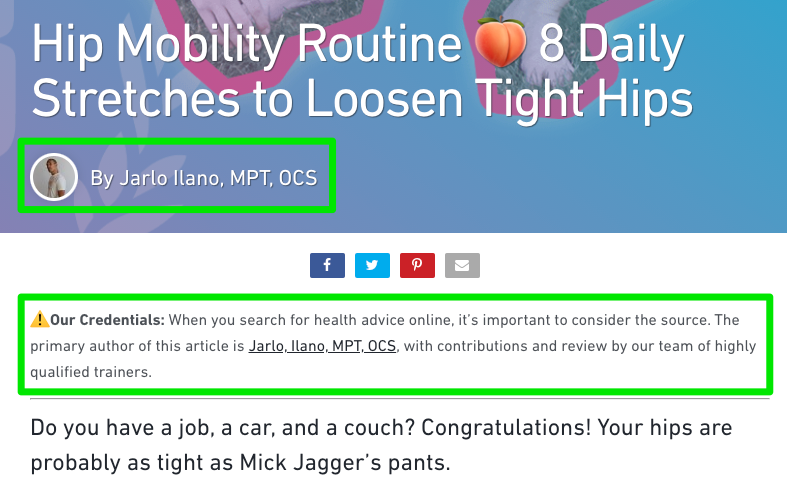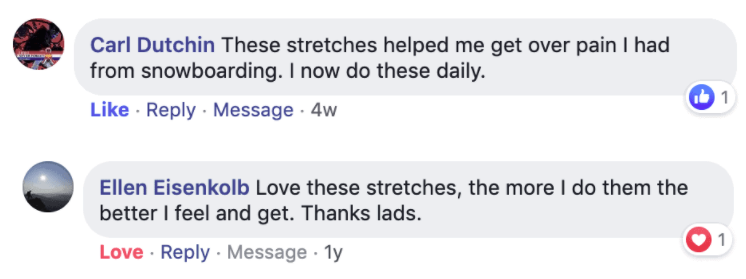6 Trust Signals For Online Health Information
If people don’t trust your site, they’ll leave. Nowhere else is this more accurate than the online health space.
Your site’s perceived trustworthiness is often the difference between a loyal visitor and one that bounces for good.
I can say this with confidence because Brooks Digital’s work involves interviewing people to learn how they use health websites.
For example, in a recent round of research, more than 75% of interviewees admitted they selected health sites based on their perceived credibility.
Even a doctor’s recommendation is not strong enough to create trust. One patient outright dismissed a resource provided by their doctor because the source didn’t seem reputable to them.
Unfortunately, even if you have quality information, it’s no use if people don’t trust your site enough to stay and read it.
This article highlights the six trust signals we’ve uncovered in our work so you can get more people to stick around on your site.
Signal 1: Author
When it comes to health information, people want to know who’s writing it.
In an age where anyone can launch a website with minimal effort, visitors want to vet the person behind the writing.
Specifically, we’ve heard the following trust indicators around authorship:
- The author has medical titles (e.g., MD) in their name.
- The author has personal experience (the unspoken question: “has this person actually tried this?”).
The articles on GMB Fitness are an excellent example of authorship credibility for health information:

If your website does not provide specifics on who wrote the content, consider making authorship more prominent.
Signal 2: Peer Validation
When users aren’t sure what information to trust, they turn to their peers to validate it for them.
Validation can take the form of:
- Examining ratings and comments on the article, if they exist.
- Checking the article’s social media share counts.
- Using community/social platforms such as Reddit, Facebook or LinkedIn groups, and Slack workspaces to ask their peers for recommendations.
GMB Fitness accomplishes this by including testimonials from real users on Facebook:

The goal is to provide enough peer validation on your website that a user doesn’t feel the need to vet you through their network.
Signal 3: Source/Intent Match
Source/intent match is a fancy way of saying people gravitate to different sources of content depending on their learning goals.
For example:
- Someone looking for information on medication prescribed by their doctor will instinctively favor articles from universities, government sources, and ubiquitous health sites such as WebMD.
- However, someone looking for information on lifestyle changes such as diet and exercise will instinctively favor sources based on personal experiences, such as blogs.
The fundamental question with source/intent match is, “does this source have highly-relevant expertise on this topic?”
Fortunately, if your organization is not a university or a blog, you don’t need to fret. Just realize you need to tailor content to your visitors depending on the topic.
If you’re talking about medications, cite studies and medical professionals. If you’re talking about lifestyle changes, highlight the author’s personal experience. (And so on.)
Signal 4: Reading Level
If your content is complicated and dense, people won’t stick around. (Except if it’s targeted to medical professionals, perhaps.)
If there’s anything we’ve heard from users of health websites, it’s that they want you to talk to them at their level.
Of course, it’s not just about running your content through a reading level analyzer—although that can help.
It also means:
- Explaining complex medical terms and concepts in simple language most people can understand.
- Breaking up large paragraphs or sentences to reduce the perceived effort of reading your content.
In a sense, your content’s reading level is as much a “stickiness signal” as a trust signal.
For example, medical journals and studies are trustworthy sources of health information, but the average person will not read them.
According to Readable, 85% of the public can read your content if it has a readability grade of 8 or lower.
If your writing is more complex than that, a significant percentage of your visitors will not be able to understand you.
Signal 5: Design Gut Check
The quality of your design is the trust signal that’s most intuitively obvious.
When your site doesn’t look great, people are less likely to trust your information or stick around.
Your site doesn’t need to win design awards, but it does need to look good enough to where it doesn’t work against you.
Of course, it can be challenging to determine if your design is actively undermining trust in your website.
One thing you can do is conduct interviews with 5-7 users to get people’s honest assessment of your site, including its perceived trustworthiness.
This kind of research will reveal whether specific parts of your design need work or if you should update the whole thing.
Signal 6: Content Organization
People skim content. You’re probably doing it now. 😉
Skimming happens because people are searching for fresh, relevant, and exciting information. They may already know some things on the page and want to skip to what they don’t know.
When you organize your content into clear sections and headers, you make it scannable.
Scannable content builds trust faster because readers have an idea of what to expect next. They don’t have to take a gamble on your content and possibly waste their time reading something unhelpful.
Wrapping Up
Trust is at the heart of providing health information to an online audience.
In an increasingly crowded online space where misinformation is rampant, developing a trustworthy web presence is a considerable part of engaging and retaining your users.
If you’re considering trustworthiness as a factor in your website’s design, you’re ahead of the game.
Do the research to understand your users, and you’ll gain their trust.


